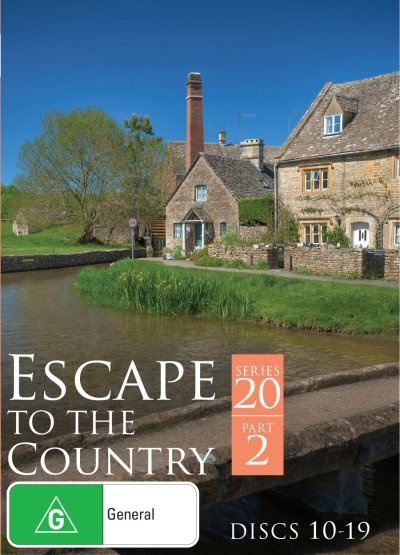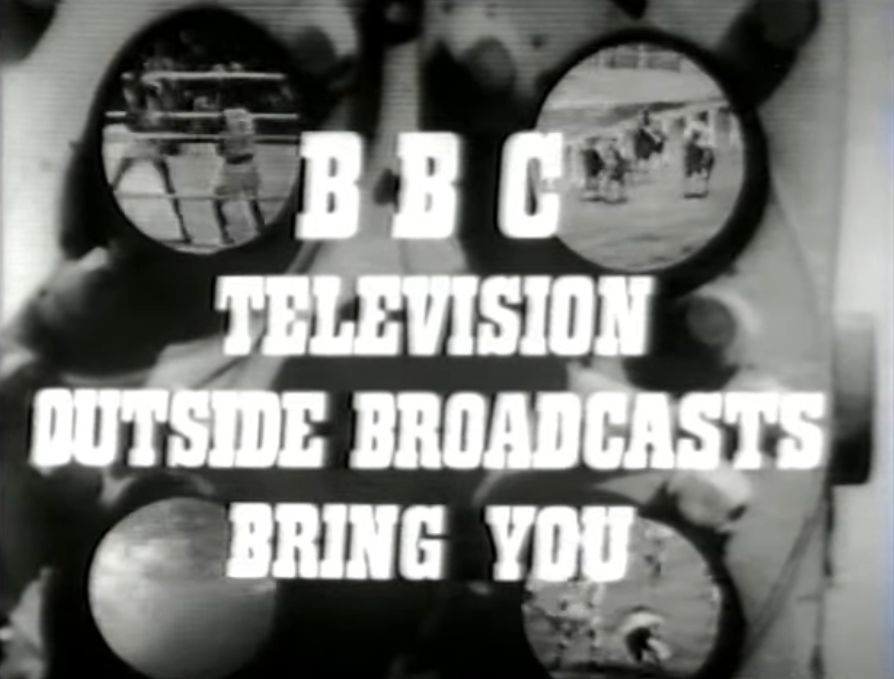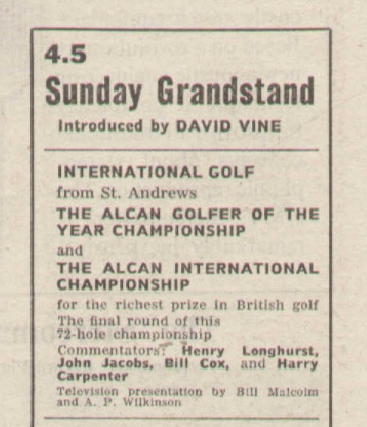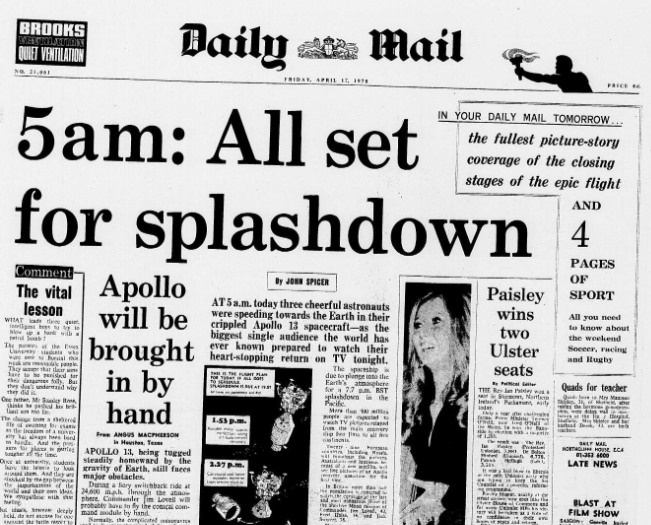It’s Saturday. It’s 12:15pm. The Weatherman just told us how rubbish the weather this weekend will be, so it’s time for… um.
14: Escape to the Country
(Shown 4365 times, 2002-2021)
Richie: “Still, I did my bit for the country.”
Eddie: “What, you stayed in the town?”
Richie: “Absolutely.”

Now admittedly, and it might be my own personal circumstances at play here, but it does seem like the much of this chart falls into one of two categories. Category One is all the programmes that have been part of the TV landscape throughout what feels like our entire lives: your Panoramas, your Matches of the Day, your Songses of Praises. Category Two comprises programmes that seem to have amassed a huge episode count seemingly out of nowhere, mainly due to the camouflage of being on when most people are at work, college and/or school. That category includes The Daily Politics, Ready Steady Cook, Cash in the Attic and this next entry on the list.
For those who usually find themselves working/learning/sensibly doing something else when it’s normally on, Escape to the Country falls firmly into the Someone Buying A House And Maybe Living In It genre, and as these things go, it’s a pretty big deal. Generally, the action involves potential home buyers tiring of life in the Big City, and are surprised to learn that their two-bed London terraced home is worth a cajillion pounds, so they’re off to buy something massive near some fields.

The buyers will look at three or four suitably sprawling properties in their chosen location, including one ‘mystery house’ chosen by the production team. SPOILER: The mystery home isn’t haunted or anything fun like that, it’s basically just Another Very Nice House But The Kitchen Is Upstairs Or Something. Once all that’s done, the buyers are asked to guess the asking prices of each house, the real asking prices are revealed, and they’re asked to reveal which one they’d like to buy. And sometimes they do, which provides some material for a future episode.
As far as I’m personally concerned, it’s something to angry up my blood as I spend an unhealthy amount of time working and still need to consider selling an internal organ whenever it’s time for a big supermarket shop. However, for many it’s clearly a lovely little slice of afternoon escapism. Not everyone is cynical as me, and feels happy for some people who can sell the Balham semi they paid £3000 for in 1978 and can subsequently afford to buy a third of Leicestershire. And that’s only partly a lazy assumption, by the way. The Independent on Sunday picked out the first episode as a Pick of the Day back in October 2002, their write up casually mentioning “an extended family from Basildon, who have a budget of £600,000, are looking for a mansion in Derbyshire”. Ooh, let’s all root for the plucky ragtag family. Collective prayer that they get a mansion they like, everyone.
But anyway.
The programme began all the way back in October 2002, in a mid-afternoon BBC2 slot, arriving with the following billing in the Radio Times:
Hoping to “go green”, a young London couple want a country house. Catherine Gee gives them some options, in the first of a new series in which city-dwellers wanting to move to the country are found homes.
It would quickly go on to become a regular for the channel, proving popular enough to receive a short repeat run on weekday morning BBC1 in the run-up to a new series in October 2004. At the time, the premise of the programme focused on families looking to leave behind the urban rat race for a rural idyll, but much of the initial ‘action’ involved the potential buyers viewing potential homes on a laptop in their city house, picking a pair of dwellings to visit in person, along with a third ‘mystery’ house. Ooh, mystery house, that’s a bit spooky… oh, it’s just that one bedroom is behind a big curtain.
From the sixth series onwards, all four potential homes would be viewed in person by the buyers, along with a ‘taster’ day where the contributors are invited to sample delights of the local community, learn a little about the area and visit a few local attractions. A few series later, the number of homes was reduced to just three – retaining, obviously, The Mystery House (attic smells of tuna, third bedroom exists only in two dimensions, etc). And that’s where the format pretty much landed for the final time – it’s stayed that way ever since.
In September 2012, as Escape to… neared its testimonial anniversary, first-run episodes were promoted to plum afternoon slots on BBC One, though revised repeats of the series had been airing on BBC One in a similar slot since 2009. In fact, the programme has been the initial beneficiary of BBC One ending the channel’s long-running Children’s BBC strand, which had been in place since the early days of the Television Service, that first non-CBBC late afternoon schedule in December 2009 dominated by a young couple’s quest to find an East Sussex home with a suitably huge kitchen.
Such longevity would usually generate a spin-off or two, and that’s very much the case with Escape to the Country. January 2017 saw the first episode of catch-up series I Escaped to the Country, with currently in its seventh series, and there was even a variant looking at those lucky enough to escape Normal Island in 2014’s Escape to the Continent. And, if rural living doesn’t butter your crumpet, 2019 saw the first episode of Escape to the Perfect Town, catering for those who get antsy if they wander too far from a Tesco Metro.
There’s even an Australian version of the series, Escape from the City airing on ABC from 2019. Indeed, the original UK version is popular enough in the antipodes to have warranted a pair of Region 4 DVDs from Aussie disc supremos Shock Entertainment – a pair of box sets totalling nineteen discs.

It’s even made a (modest) impact in the US, with the programme having appeared on US Netflix and Prime Video. Not a bad feat getting traction where huge houses are largely the default setting in all but the bigger cities, but it’s in the UK where Escape to the Country is truly an immovable feast.

13: Grandstand
(Shown 4500 times, 1958-2007)

By the 1950s, the BBC Television Service had a problem with sport. Basically, it kept bursting out everywhere – especially on Saturdays – and it HAD to be contained. 1954 had seen the introduction of midweek sporting roundup Sportsview, which arrived with a mission to enthral viewers with the latest news, views and personalities from the world of sport. All very good, but with a runtime between twenty and thirty minutes on any given week, there was only so much room for actual sporting action. Conversely, on Saturday afternoons there was lots of space to broadcast live sport, the resulting BBC-tv schedule akin to a bull let loose in a Sports Direct. Sport was ruddy well everywhere. Live sports coverage was exempt from the Postmaster General’s broadcasting hours restrictions, so Saturday afternoons were pretty much a Linekeresque tap-in for BBC schedulers.
Picking a Saturday at random to give an example, 8 September 1956 saw the following schedule in the Radio Times:
1.50pm: Twenty minutes of Motor Racing from the British Automobile Racing Club’s September Meeting at Goodwood, including The Madgwick Cup, a five-lap race for cars up to 1,100cc. But no time to focus on that, because at 2.10pm viewers were whisked away to the Derby Baths in Blackpool for the National Swimming and Diving Championships. But don’t get too attached to that, because at 2.25pm we’re back off to the Motor Racing for twenty minutes, then back to the Derby Baths at 2.45pm. Who will win the big prize there? You’d better hope it’s decided by 3pm, because then we’re off to Farnborough for an Air Display by the Society of British Aircraft Constructors.
Phew, eh? There really should be a little more order to this kind of thing.
Luckily, a set of steady hands were on the way to steady the Saturday sporting tiller. Programme editor Paul Fox, production assistant Bryan Cowgill and presenter-cum-head of Outside Broadcasts Peter Dimmock had all worked wonders within the BBC’s Outside Broadcast team, Fox having created and edited Sportsview (plus the annual BBC Sports Personality of the Year, originally known as Sports Review of the Year), while Dimmock had proved his broadcasting mettle by taking charge of the BBC-tv’s coverage of the Queen’s Coronation, as well as working as main presenter of Sportsview. But it was Cowgill who had an idea that would transform weekend television for decades to come: an umbrella approach to the Saturday sporting portfolio.

Peter Dimmock’s stock was certainly high at the time. In the run-up to ITV’s big launch in 1955, the new network had been prepared to offer hefty pay increases to coax the BBC’s top talent over to the Light Network. Then-DG Sir Ian Jacob, displaying the sense of stoicism and stinginess you’d expect from the BBC of the 50s, was largely reluctant to match any such offers, him being well aware that the BBC’s more limited budget would necessitate cuts elsewhere offset any pay jumps.
That wasn’t the case when Director of Television Sir George Barnes rang up to let him know about ITV’s approach to Peter Dimmock. The response from the DG was definitive: “Make any sort of personal relationships for him – as a personal case – that are necessary.”
That was a decision borne of much more than keeping that friendly sports presenter on screen. Dimmock had displayed a special skill in negotiating sports contracts, and in selling the BBC programmes those contracts generated to overseas broadcasters. He’d also built up a series of working relationships with various sporting authorities, which combined with his ease at presenting live sport coverage made for a pretty comprehensive package. On top of everything else, he headed the BBC’s Outside Broadcasts Department, and had served as Sports Adviser to the European Broadcasting Union. If he hopped channels, any replacement would need one hell of a CV.
Dimmock’s experience at working with the Outside Broadcasts Unit would be essential. He’d been a key component in TV coverage of the Queen’s coronation in 1953, serving as producer for coverage of the Coronation Service from Westminster Abbey, having worked closely with sceptical Abbey personnel to prove that the presence of TV cameras need not be a distraction from the main event. Before then, he’d worked on the 1948 Olympics, the first international relay from Calais in 1950 and the funeral of George VI in 1952.
Having been so instrumental in several of the biggest moments in BBC-tv’s life thus far, throwing to live racing from Haydock was hardly a herculean task. Having seen teleprompters in use during his time in the USA, he know how to get the best out of the nascent tech while live to air. In short, the only person who could hope to keep all the levers moving when it came to launching the BBC’s new, sprawling and enthralling Saturday spectacular: Grandstand.

Arriving on Britain’s screens for the first time on 11 October 1958, this was to no small undertaking. A shade under three hours of live television each Saturday, mostly, though not exclusively, devoted to sport – this was a programme from the BBC Television Outside Broadcasts department, after all. Paul Fox took to the Radio Times to explain just how it would all – hopefully – come together, promising that “all the items that used to appear here and there on Saturday afternoons will now come under the Grandstand umbrella”.
With Dimmock at the controls from a swanky new studio at Lime Grove, at least for those first few weeks before his co-anchor – a tyro David Coleman – took sole charge of presentation (allowing Dimmock to move behind the scenes), there were football newsflashes, racing updates (complete with the latest odds), and updates from reporters all around the UK. Fox promised that “sports news of the day will be given as it happens – and, whenever possible, where it happens”, thanks to that BBC Outside Broadcast unit. There was the promise of live horse racing each week, live swimming, motor racing, ice skating and table tennis in the coming weeks. Some of those admittedly easier to capture on camera than others.
There was even the tentative promise of (“if our hopes are realised”) live boxing. But, slightly surprisingly, the callout event on the big preview of Grandstand was… snooker. Not the most obvious draw for the black and white tellies of the time, but this was no ordinary event – Joe Davis, the “greatest snooker player of all time” had signed up for a series of special challenge matches at venues around Britain, taking on top players of the day, such as Walter Donaldson and John Pulman. And, to make it even more of an occasion, Joe’s first match would be against brother and fellow pro Fred Davis.
The action wasn’t just restricted to That England, either. The BBC’s Scottish Outside Broadcast Unit (a branding that conjures up a certain stereotypical image, unless it’s just me picturing an OB van bedecked in tartan) would be on hand to capture action from the World Amateur Team Golf Championship from St Andrews.
It’s fair to say that was a lot to be going on with. The only real hitch was a TV schedule that insisted subsequent children’s programming start airing at 4.45pm, a time which neatly clashes with all the sports results Grandstand would really quite like to tell viewers about. It took until April 1959 before those fifteen critical minutes were finally added to Grandstand’s runtime, allowing for a full Sports Result Service, and an easier route for participants in the football pools to learn they’d need to work for at least another week.
As mentioned, the whole affair being centred around the Outside Broadcast Unit rather than sport specifically gave the programme freedom to wander from its core remit if circumstances required, such as the Henley Regatta or sundry Car Shows. A prime example of this came on 22 February 1964, and an edition promising “the return of the Beatles to the UK, as well as horse racing and rugby union”.

Unsurprisingly given its position on this list, the programme was a success. So much so, the Grandstand branding swiftly swallowed up key events on the sporting calendar. Alongside regular Saturday afternoon Grandstand, the Radio Times would trumpet the presence of Derby Day Grandstand (from 1960), Cup Final Grandstand (from 1965), World Cup Grandstand (from 1966), Olympic Grandstand (from 1968), and Ryder Cup Grandstand (from 1993), many of which didn’t even air at the weekend. The slow creep of sporting endeavours into the Sabbath also led to occasional airings of Sunday Grandstand from 1967 onwards.

However, the most thrillingly-titled variant was set to arrive on the evening of Tuesday 21 April 1970, where a special edition (step aside, Sportsnight) featured the big Joe Bugner v Ray Patterson boxing match in London, followed by “Apollo 13 Splashdown”. Yep, the return to Earth of moon men James A. Lovell Jr, John L. Swigert Jr and Fred W. Haise Jr led to the programme being rechristened Splashdown Grandstand for a single edition. Just look at this planned programme schedule for the night:
8.0 International Professional Boxing: Joe Bugner v Ray Patterson
8.45 The Main News With Kenneth Kendall
9.0 Apollo 13 Splashdown
9.02 Re-entry due
9.11 Parachutes open
9.16 Splashdown
10.10 On Deck
10.15 International Match of the Day: England v Northern Ireland
Epic. Except, of course, a set of fuel cells 180,000 nautical miles from Earth had other ideas. The return flight of the Apollo 13 crew had to be frantically rearranged for the previous Friday, and one of the most exhilarating live broadcasts of the entire space race took place then instead.


All very well, but what of our Splashdown Grandstand? Those midweek sporting events instead went out as individual programmes, with the scheduled Splashdown programme replaced by The Dick Emery Show and a rescheduled 24 Hours. Ah, well.
Rewinding slightly, by 1965 Grandstand had a rival on the other side. ITV’s initial reticence to sport receding to make way for World of Sport, which was now very much in play. But while their rival had the winsome Dickie “Last Time I Saw Something Like That The Whole Herd Had To Be Put Down” Davies at the helm, the BBC still held the rights to all the key events, and with Frank Bough sharing hosting duties with David Coleman (the latter frequently off displaying his commentary chops), there was still only one destination for the serious sports fan. World of Sport had Canadian log rolling, Grandstand had Eddie Waring, Football Focus and the Vidiprinter. It was no contest. Especially as Grandstand would be the go to destination for getting those all-important results come 4.45pm. Even now, people of a certain age can only read the Classified Football Results with a particular intonation in their heads.

By the 1980s, a bejumpered Coleman was more at home behind a Question of Sport desk, and with Frank Bough occupied in a similarly wooly vocation on Breakfast Time, it was time for TV’s Mr Unflappability to shine. Step forward Des Lynam. Never had helming several hours of live television on a weekly basis – imagine an election night every seven days, basically – seemed so ruddy effortless. And so, by the late 1980s, Grandstand was cock of the walk. World of Sport had ceased to be, with ITV spending more energy on snaffling exclusivity on individual sporting events – think The Football League, Athletics and Horse Racing – but Grandstand’s greatest foe, and ultimate conqueror, was about to appear from the Sky.
The early days of satellite broadcasting had been no threat to the main broadcasters – nobody was breaking into a sweat over the Screensport Super Cup – but by the mid-1990s, Sky Sports had the budget and the broadcasting bandwidth to do everything Grandstand couldn’t. It could continue live coverage of golfing tournaments, rugby matches or tennis opens way into primetime, with no pressing need to halt coverage in favour of Steve Wright’s People Show or Big Break. And as the pot of available events began to empty, the BBC needed to make more of what it still had. Would people be tuning into Grandstand and hope they enjoyed what they found there, or would they be more enticed by a programme listing for a live Six Nations match?
In the digital EPG age of the noughties, viewers didn’t want to just see that a sprawling Grandstand strand was on, they’d want to know which sport to expect and when. A brand that was once spread across the BBC like sporting butter seemed to be little more than an anachronism kept around out of loyalty more than practicality, and in January 2007 it finally bowed out. By the time of the final Grandstand programme listing, pointing viewers toward the Red Button and BBC website for uninterrupted coverage of the Australian Open or European Figure Skating Championships was the norm, it was clear how the linear Grandstand strand wasn’t really needed any more. The fact that much of that final Saturday edition was shovelled onto BBC2 to make way for a live FA Cup Match of the Day between Luton Town and Blackburn only underlined how inessential the once hardy old brand had become.
Then, it was gone. Broken up for scrap. The following Saturday saw Football Focus officially span off as a standalone programme (which, as far at Electronic Programme Guides had been concerned, it had been for a while anyway), as was the BBC’s Six Nations Rugby coverage. Final Score had the same treatment, once an integral part of Grandstand, now a plucky stat-based orphan left to flourish on its own.
And do you know what? It was fine. When there wasn’t any big sporting event to show on a Saturday afternoon, the BBC no longer felt the need to fling on something sporty for the sake of it. This was an era where Sky Plus was king of the living room. People wanted to be able to record ‘Rugby League’, ‘Swimming’, or ‘Golf’, not use up a valuable chunk of their PVR’s 20GB capacity on several whole hours of sport because that’s how the programme guide had wanted it.
This was the future.
And yet, in a way, it was 1958 all over again.


NOTE: Updated figure and table on 16/7/23 to correct the episode counts for 1965 and 1966, plus totals, accordingly. Thanks to eagle-eyed reader @michael_sas for spotting the discrepancy.
There we go, another one out of the way. Phew. Next time: we brush the quivering brim of the Top Ten. Ooh, eh?



2 responses to “Splashdown! It’s The 100 Most-Broadcast BBC Programmes Of All Time (14 and 13)”
Grandstand used to be so frustrating if you wanted to watch the snooker semifinals and they’d show a frame and then cut to what Steve Wright’s Mr Angry would call “stupid sports”.
World of Sport had one thing that Grandstand didn’t (apart from Dickie Davies): wrestling. Easy to dismiss as comic entertainment now, but it was huge at the time. I’d say, after footballers, these were the most well known (shall we say athletes?) among all generations of the family.
LikeLike
[…] Escape to the Country(Shown 4365 times, […]
LikeLike